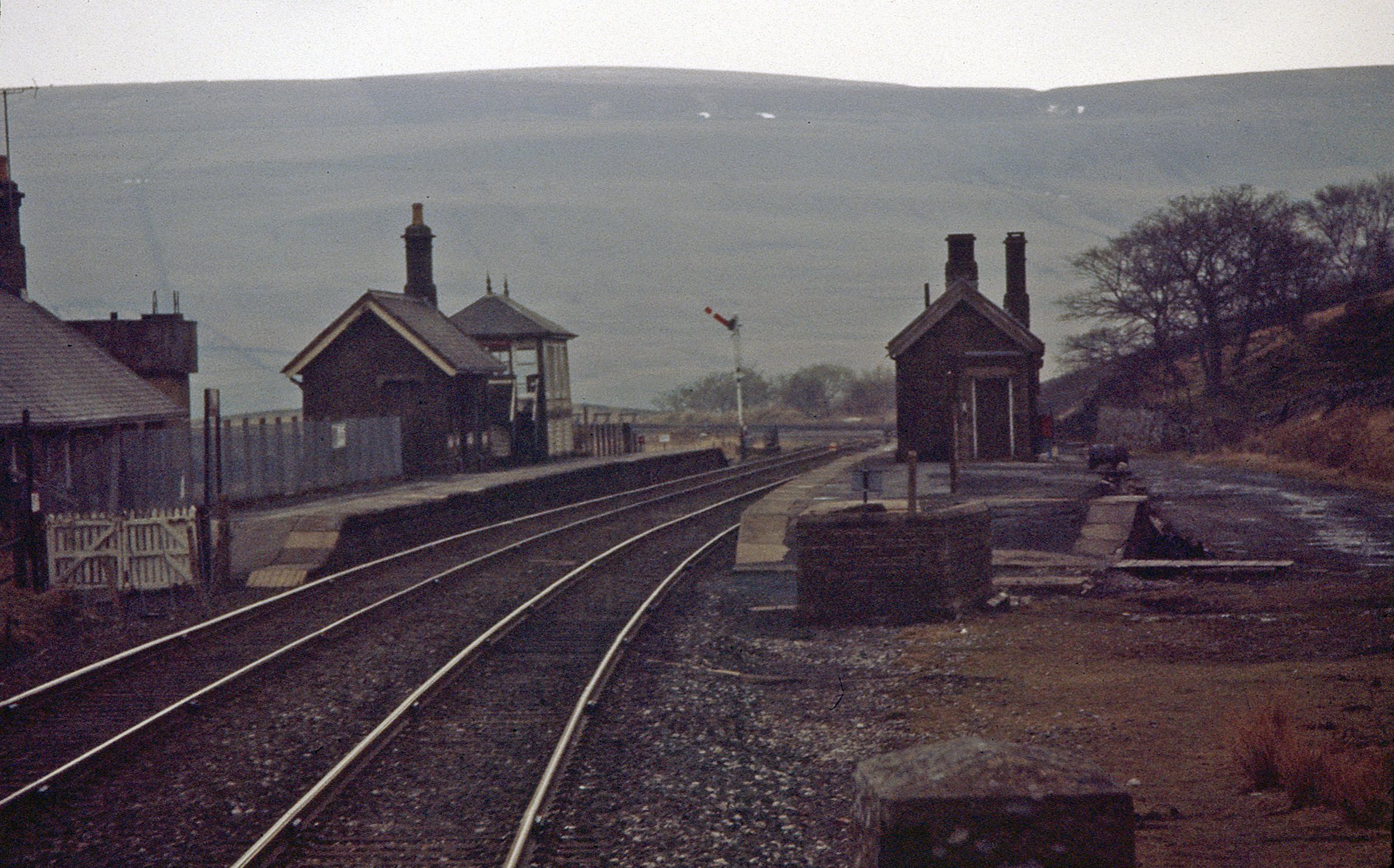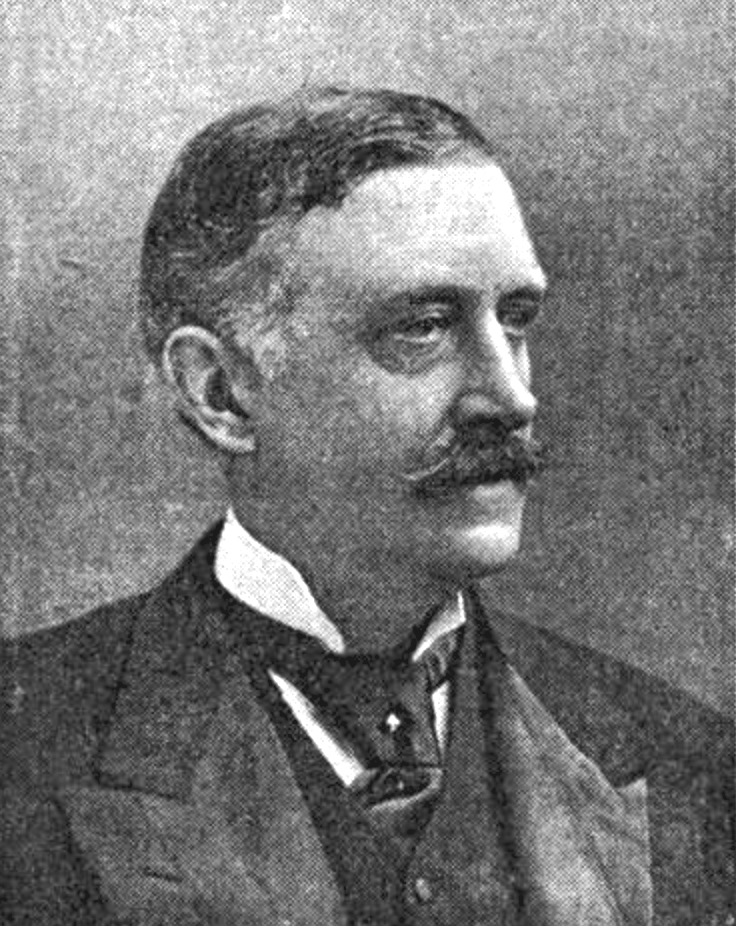|
Thirsk Rail Crash (1892)
The 1892 Thirsk rail crash happened at Manor House signal box on 2 November 1892, on the North Eastern Railway about north of Thirsk railway station in the North Riding of Yorkshire, England. Events James Holmes was the signalman at Manor House signal box. The day before the crash, his infant daughter Rose was taken ill and later died. Holmes had been awake for over 36 hours and was extremely distressed, having ministered to the child, walked miles to try and find the local doctor (who was away from home attending to another patient) and comforted his distraught wife. He reported to the stationmaster at Otterington, Thomas Kirby, that he would be unable to work the shift on the next night, but Kirby merely asked his superiors for a relief signalman, without stating that the reason was that Holmes had reported himself unfit to work. The Assistant District Signals Inspector at York, already harassed by other emergencies, replied that there was no relief signalman available, and ... [...More Info...] [...Related Items...] OR: [Wikipedia] [Google] [Baidu] |
Thirsk
Thirsk is a market town and civil parish in the Hambleton district of North Yorkshire, England known for its racecourse; quirky yarnbomber displays, and depiction as local author James Herriot's fictional Darrowby. History Archeological finds indicate there was a settlement in Thirsk around 500–600 BC. The town's name is derived from the Old Norse word ''þresk'' meaning fen or lake. Thirsk is mentioned twice in the 1086 ''Domesday Book'' as ''Tresche'', in the ''Yarlestre'' wapentake, a village with ten households. At the time of the Norman invasion the manor was split between ''Orm'' and ''Thor'', local Anglo-Saxon landowners. Afterwards, it was split between ''Hugh, son of Baldric'' and the Crown. House of Mowbray Most of Thirsk was granted to a Robert from Montbray for whose descendant House of Mowbray the vale of Mowbray is named. By 1145, what is now Old Thirsk, gained a Market charter giving it town and borough status. The remaining land in the parish was sti ... [...More Info...] [...Related Items...] OR: [Wikipedia] [Google] [Baidu] |
Manslaughter
Manslaughter is a common law legal term for homicide considered by law as less culpable than murder. The distinction between murder and manslaughter is sometimes said to have first been made by the ancient Athenian lawmaker Draco in the 7th century BC. The definition of manslaughter differs among legal jurisdictions. Types Voluntary In voluntary manslaughter, the offender had intent to kill or seriously harm, but acted "in the moment" under circumstances that could cause a reasonable person to become emotionally or mentally disturbed. There are mitigating circumstances that reduce culpability, such as when the defendant kills only with an intent to cause serious bodily harm. Voluntary manslaughter in some jurisdictions is a lesser included offense of murder. The traditional mitigating factor was provocation; however, others have been added in various jurisdictions. The most common type of voluntary manslaughter occurs when a defendant is provoked to commit homicide. This i ... [...More Info...] [...Related Items...] OR: [Wikipedia] [Google] [Baidu] |
List Of British Rail Accidents
This lists significant accidents involving railway rolling stock, including crashes, fires and incidents of crew being overcome by locomotive emissions. Other railway-related incidents such as the King's Cross fire of 1987 or the 7 July 2005 London bombings are not included. Worst accidents The worst accident was the Quintinshill rail disaster in Scotland in 1915 with 226 dead and 246 injured. Second worst, and the worst in England, was the 1952 Harrow and Wealdstone rail crash, which killed 112 people and injured 340. The death toll from the 1957 Lewisham rail crash was 90; for the 1889 Armagh rail disaster (the worst in Northern Ireland) it was 80; and for the 1879 Tay Bridge disaster it was 75. The worst rail accident in Wales was the 1868 Abergele rail disaster, with 33 dead. The accident on the London Underground with the highest loss of life was the Moorgate tube crash which occurred on the Northern City Line in 1975 (at the time it was part of the London Underground Netwo ... [...More Info...] [...Related Items...] OR: [Wikipedia] [Google] [Baidu] |
Winwick Rail Crash
The Winwick rail crash took place at Winwick Junction, near Warrington on the London, Midland and Scottish Railway, on 28 September 1934. Two trains collided, resulting in 11 deaths and 19 injured. Background Although the signalman on duty was ultimately responsible for the collision, there were several contributing factors. The layout of the section was complex, with four running lines and a junction between the main Warrington-Preston line and the Warrington-Earlestown branch line. Those two lines carried so much traffic that the signalman had a booking lad with him in the signal box, whose function was to keep the train register and use it to remind the signalman of the position of trains within the section at any time. Sequence of events Shortly after 9pm a local train from Warrington, destined for Wigan and drawn by 2-4-2 tank engine No. 6632, entered the section. It was due to be turned off onto the Earlestown branch line, but Signalman Bloor at the Winwick Junct ... [...More Info...] [...Related Items...] OR: [Wikipedia] [Google] [Baidu] |
Quintinshill Rail Crash
The Quintinshill rail disaster was a multi-train rail crash which occurred on 22 May 1915 outside the Quintinshill signal box near Gretna Green in Dumfriesshire, Scotland, United Kingdom. It resulted in the deaths of over 200 people, and remains the worst rail disaster in British history. The Quintinshill signal box controlled two passing loops, one on each side of the double-track Caledonian Main Line linking Glasgow and Carlisle (now part of the West Coast Main Line). At the time of the accident, both passing loops were occupied with goods trains and a northbound local passenger train was standing on the southbound main line. The first collision occurred when a southbound troop train travelling from to Liverpool collided with the stationary local train. A minute later the wreckage was struck by a northbound sleeping car express train travelling from London Euston to Glasgow Central. Gas from the Pintsch gas lighting system of the old wooden carriages of the troop train ign ... [...More Info...] [...Related Items...] OR: [Wikipedia] [Google] [Baidu] |
Hawes Junction Train Disaster
The Hawes Junction rail crashHawes Junction station is now called Garsdale occurred at 5.49 am on 24 December 1910, just north of the Lunds viaduct between Hawes Junction (now known as Garsdale station) and Aisgill on the Midland Railway's Settle and Carlisle main line in the North Riding of Yorkshire (now North Yorkshire), England. It was caused when a busy signalman, Alfred Sutton, forgot about a pair of light engines waiting at his down (northbound) starting signal to return to their shed at Carlisle. They were still waiting there when the signalman set the road for the down Scotch express. When the signal cleared, the light engines set off in front of the express into the same block section. Since the light engines were travelling at low speed from a stand at Hawes Junction, and the following express was travelling at high speed, a collision was inevitable. The express caught the light engines just after Moorcock Tunnel near Aisgill summit in Mallerstang and was almost ... [...More Info...] [...Related Items...] OR: [Wikipedia] [Google] [Baidu] |
Clayton Tunnel Rail Crash
The Clayton Tunnel rail crash occurred on Sunday 25 August 1861, from Brighton on the south coast of England. At the time it was the worst accident on the British railway system. A train ran into the back of another inside the tunnel, killing 23 and injuring 176 passengers. Three north-bound trains left Brighton station within a few minutes of one another. At the southern entrance to Clayton Tunnel an automatic signal failed to return to danger after the first train passed, allowing the second train to follow it into the tunnel. The signaller at the south end of the tunnel belatedly waved a red flag in an attempt to stop the second train, but thought that it had not been seen. However the driver of the second train had briefly glimpsed the flag and stopped his train inside the tunnel. The signaller then misinterpreted a 'line clear' telegraph message from the signal box at the north end of the tunnel as referring to the second train instead of the first, and signalled the third ... [...More Info...] [...Related Items...] OR: [Wikipedia] [Google] [Baidu] |
Francis Marindin
Colonel Sir Francis Arthur Marindin, KCMG (1 May 1838 – 21 April 1900) served with the Royal Engineers and was a key figure in the early development of association football. He was later knighted for his work in public services.Francis Arthur MARINDIN – Obituary Early life and education Born in , he was the second son of the Rev. Samuel Marindin of Chesterton, in the parish of , . He was educated at[...More Info...] [...Related Items...] OR: [Wikipedia] [Google] [Baidu] |
Board Of Trade
The Board of Trade is a British government body concerned with commerce and industry, currently within the Department for International Trade. Its full title is The Lords of the Committee of the Privy Council appointed for the consideration of all matters relating to Trade and Foreign Plantations, but is commonly known as the Board of Trade, and formerly known as the Lords of Trade and Plantations or Lords of Trade, and it has been a committee of the Privy Council of the United Kingdom. The board has gone through several evolutions, beginning with extensive involvement in colonial matters in the 17th century, to powerful regulatory functions in the Victorian Era and early 20th century. It was virtually dormant in the last third of 20th century. In 2017, it was revitalised as an advisory board headed by the International Trade Secretary who has nominally held the title of President of the Board of Trade, and who at present is the only privy counsellor of the board, the other m ... [...More Info...] [...Related Items...] OR: [Wikipedia] [Google] [Baidu] |
Track Circuits
A track circuit is an electrical device used to prove the absence of a train on rail tracks to signallers and control relevant signals. An alternative to track circuits are axle counters. Principles and operation The basic principle behind the track circuit lies in the connection of the two rails by the wheels and axle of locomotives and rolling stock to short an electrical circuit. This circuit is monitored by electrical equipment to detect the absence of the trains. Since this is a safety appliance, fail-safe operation is crucial. Hence the circuit is designed to indicate the presence of a train when failures occur. On the other hand, false occupancy readings are disruptive to railway operations and must be minimized. Track circuits allow railway signalling systems to operate semi-automatically, by displaying signals for trains to slow or stop in the presence of occupied track ahead of them. They help prevent dispatchers and operators from causing accidents, both by inform ... [...More Info...] [...Related Items...] OR: [Wikipedia] [Google] [Baidu] |
Block Instruments
Absolute block signalling is a British signalling scheme designed to ensure the safe operation of a railway by allowing only one train to occupy a defined section of track (block) at a time. This system is used on double or multiple lines where use of each line is assigned a direction of travel. A train approaching a section is ''offered'' by a signalman to his counterpart at the next signal box. If the section is clear, the latter ''accepts'' the train, and the first signalman may clear his signals to give permission for the train to enter the section. This communication traditionally takes place by bell codes and status indications transmitted over a simple telegraph wire circuit between signalmen using a device called a ''block instrument'', although some contemporary block working is operated wirelessly. This process is repeated for every block section a train passes through. The absolute block system does not replace the use of any other form of signalling, such as fixe ... [...More Info...] [...Related Items...] OR: [Wikipedia] [Google] [Baidu] |
Rule 55
Rule 55 was an operating rule which applied on British railways in the 19th and 20th centuries. It was superseded by the modular rulebook following re- privatisation of the railways. It survives, very differently named: the driver of a train waiting at a signal on a running line must remind the signaller of its presence. Rule 55 was introduced following a spate of accidents caused by signalmen forgetting that trains were standing on a running line, sometimes within sight of their signal boxes. It required that, if a train was brought to a stand at a signal, within three minutes in clear weather or immediately in rain, snow, or fog, the driver of the train must despatch his fireman, guard, or any shunter riding on the train, to the signal box to ensure that the signalman was aware of the presence of the train, and that all safeguards to protect it, such as slides or collars on the signal levers, were in place, the crewman then signing the train register to confirm this. In pra ... [...More Info...] [...Related Items...] OR: [Wikipedia] [Google] [Baidu] |







